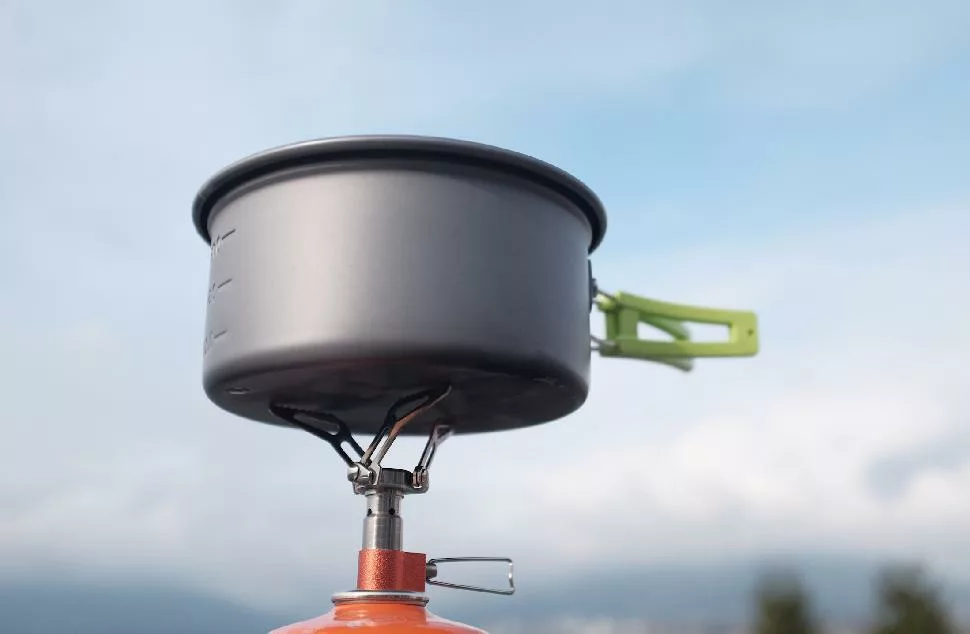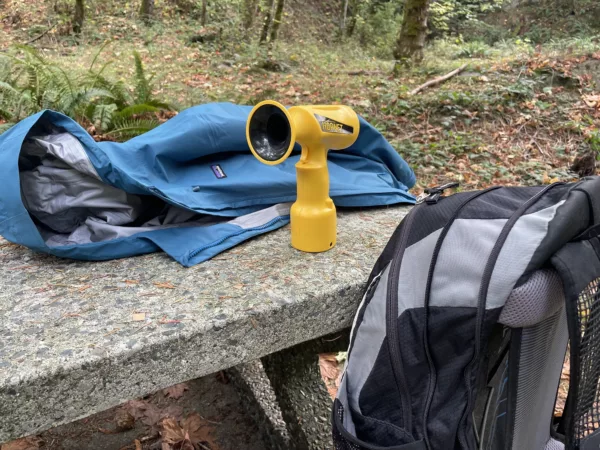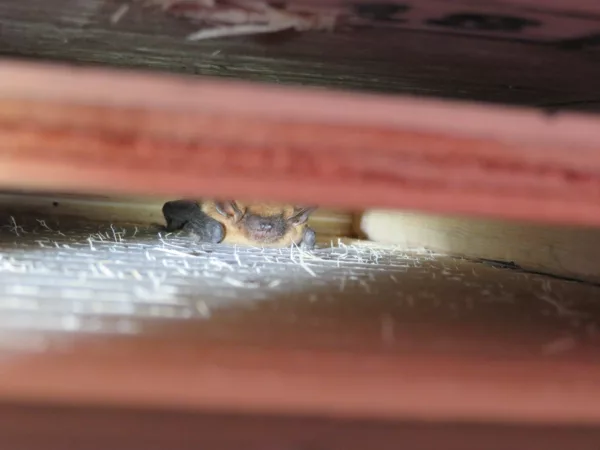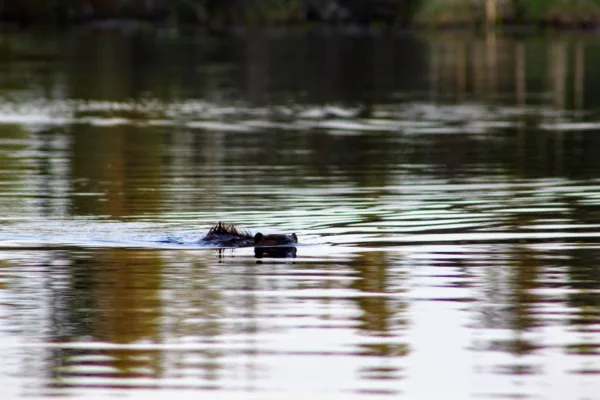An Ode to the Canister Stove—The Best Way to Cook At Camp

How do you cook at the campsite?
On the campfire? Romantic—but it’s slow, complicated and in these years of summertime burn-bans, less and less a viable option. Big ‘ol multi-burner grills? Those campsite classics are nice for the #VanLife crowd and that’s about it. Stick stoves? A great backup, but not terribly handy when you’re cold and hungry and need food now.
No, for camp cooking there are only two reasonable options. The liquid fuel stove and the canister stove. Both work. One is better.
Backpacking traditionalists may light their torches with white gas in response, but in my opinion nothing beats a canister stove.
Let me explain why. Well—first, let me explain what and how. Quick primer (no pun intended): a liquid gas stove consists of a fuel container commonly filled with white gas and an integrated pump/primer, which connects via fuel line to a standalone burner unit.
A canister stove is a compact burner with integrated regulator that screws atop a compressed cylinder of gas. (See, already you can judge which is simpler…)
Yes, people love their liquid gas stoves. They’re efficient, often boiling one litre of water in less than four minutes. (Pretty much the same as a canister stove.) Their fuel is cheaper—maybe one-quarter as much as a canister stove—but the stove itself costs exponentially more to purchase. Quality liquid gas stoves cost at least $90, and often $150 or more, whereas compact canister stoves, like this one, cost about $30—other cheapies dip to as low as $20, or top-brand units peak as high as $80. Even the difference between comparable mid-priced units buys a heckuva lot of fuel.
Liquid gas stoves have refillable fuel cylinders, sure, but convenience-wise, pretty much anywhere you can buy white gas also sells compressed isobutane canisters. And tradition states liquid gas stoves work better than canister stoves at high altitudes or in deep cold—which was true until modern canister tech from companies like Primus caught up.
So let me tell you why canister stoves rule.
We’ve already talked price. No comparison there—big win for the little stove.
How about weight? Is that ever a concern for you backpackers out there? I’ve seen canister stoves that weigh about as much as a golf ball and are barely any bigger when folded up. Add the fuel canister and some still come in at under 200 grams total—whereas white gas units could be triple that—so there’s no denying canister stoves win for weight and size.
White gas stinks. And I guarantee you, sometime during the life of your liquid gas stove you will spill the stuff. Maybe it’s at home while refilling the canister. Maybe it’s at the campsite, reducing your total supply. Or maybe it’s inside your backpack when the lid comes loose and you spend the rest of your trip stinking like a gas jockey. This will never happen with a canister stove.
Low-maintenance is the best maintenance. Canister stoves will last decades with barely more than an annual wipe-down. Your precious liquid gas stove? MSR has a six-minute detailed video on its regular maintenance routine. Ah, no thank you.
Coffee NOW. With my trusty canister stove, I can drop my backpack and boil a half-litre of water in minutes. No priming or pumping. No refills. Just screw and light. OK—it’s not that much faster than a liquid gas stove, but there are instances when every second counts. Coffee time is one of those times.
“Oh, what about wind?” you ask. Windscreens are available for canister stoves too.
“What about the cold?” you retort. Well, like I said, modern tech has pretty much solved that problem—winter canisters are now rated to -20—though it’s the one area I will concede a little to the liquid lobby… if you spend a lot of time backpacking at temps below -20 or at altitudes above 3,000 metres…
So consider this an ode to the canister stove. I love mine. It’s the only way I cook at the campsite.
Because it’s the best way to cook at a campsite.
Related Articles:
A Simple Piece of Gear You Need for Winter (But Don’t Already Have)
10 Unusual Items That Will Make Your Campsite Awesome
21 Insanely Cool Gear Items You Probably Haven’t Heard About














